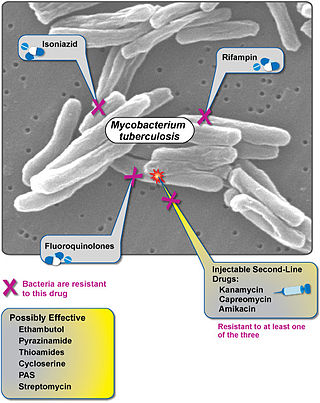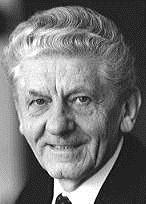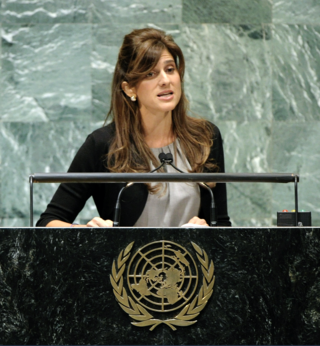Related Research Articles

Tuberculosis (TB), also known colloquially as the "white death", or historically as consumption, is an infectious disease usually caused by Mycobacterium tuberculosis (MTB) bacteria. Tuberculosis generally affects the lungs, but it can also affect other parts of the body. Most infections show no symptoms, in which case it is known as latent tuberculosis. Around 10% of latent infections progress to active disease which, if left untreated, kill about half of those affected. Typical symptoms of active TB are chronic cough with blood-containing mucus, fever, night sweats, and weight loss. Infection of other organs can cause a wide range of symptoms.

Christmas seals are adhesive labels that are similar in appearance to postage stamps that are affixed to mail during the Christmas season to raise funds and awareness for charitable programs. Such seals have become particularly associated with lung diseases such as tuberculosis, and with child welfare. Christmas seals are regarded as a form of cinderella stamp in contrast with Christmas stamps used for postage.
Lifestyle diseases can be defined as diseases linked with one's lifestyle. These diseases are non-communicable diseases. They are caused by lack of physical activity, unhealthy eating, alcohol, substance use disorders and smoking tobacco, which can lead to heart disease, stroke, obesity, type II diabetes and lung cancer. The diseases that appear to increase in frequency as countries become more industrialized and people live longer include Alzheimer's disease, arthritis, atherosclerosis, asthma, cancer, chronic liver disease or cirrhosis, chronic obstructive pulmonary disease, colitis, irritable bowel syndrome, type 2 diabetes, heart disease, hypertension, metabolic syndrome, chronic kidney failure, osteoporosis, PCOD, stroke, depression, obesity and vascular dementia.
Directly observed treatment, short-course is the name given to the tuberculosis (TB) control strategy recommended by the World Health Organization. According to WHO, "The most cost-effective way to stop the spread of TB in communities with a high incidence is by curing it. The best curative method for TB is known as DOTS." DOTS has five main components:

Tuberculosis management describes the techniques and procedures utilized for treating tuberculosis (TB).

World Tuberculosis Day, observed on 24 March each year, is designed to build public awareness about the global epidemic of tuberculosis (TB) and efforts to eliminate the disease. In 2018, 10 million people fell ill with TB, and 1.5 million died from the disease, mostly in low and middle-income countries. This also makes it the leading cause of death from an infectious disease.

Pyrazinamide is a medication used to treat tuberculosis. For active tuberculosis, it is often used with rifampicin, isoniazid, and either streptomycin or ethambutol. It is not generally recommended for the treatment of latent tuberculosis. It is taken by mouth.

The European Centre for Disease Prevention and Control (ECDC) is an agency of the European Union (EU) whose mission is to strengthen Europe's defences against infectious diseases. It covers a wide spectrum of activities, such as: surveillance, epidemic intelligence, response, scientific advice, microbiology, preparedness, public health training, international relations, health communication, and the scientific journal Eurosurveillance. The centre was established in 2004 and is headquartered in Solna, Sweden.

Tuberculous meningitis, also known as TB meningitis or tubercular meningitis, is a specific type of bacterial meningitis caused by the Mycobacterium tuberculosis infection of the meninges—the system of membranes which envelop the central nervous system.

Extensively drug-resistant tuberculosis (XDR-TB) is a form of tuberculosis caused by bacteria that are resistant to some of the most effective anti-TB drugs. XDR-TB strains have arisen after the mismanagement of individuals with multidrug-resistant TB (MDR-TB).

Tuberculosis is a serious public health problem in China. China has the world's third largest cases of tuberculosis, but progress in tuberculosis control was slow during the 1990s. Detection of tuberculosis had stagnated at around 30% of the estimated total of new cases, and multidrug-resistant tuberculosis was a major problem. These signs of inadequate tuberculosis control can be linked to a malfunctioning health system. The spread of severe acute respiratory syndrome (SARS) in 2003, brought to light substantial weaknesses in the country's public health system. After the government realized the impact that the SARS outbreak had on the country, they increased leadership in their health department. After the SARS epidemic was brought under control, the government increased its commitment and leadership to tackle public health problems and, among other efforts, increased public health funding, revised laws that concerned the control of infectious diseases, implemented the world's largest internet-based disease reporting system to improve transparency, reach and speed, and started a program to rebuild local public health facilities and national infrastructure.

Health in Ethiopia has improved markedly since the early 2000s, with government leadership playing a key role in mobilizing resources and ensuring that they are used effectively. A central feature of the sector is the priority given to the Health Extension Programme, which delivers cost-effective basic services that enhance equity and provide care to millions of women, men and children. The development and delivery of the Health Extension Program, and its lasting success, is an example of how a low-income country can still improve access to health services with creativity and dedication.
World Lung Foundation (WLF) is a non-profit foundation established in 2004 to support private organizations and government agencies, who work to improve lung health, predominantly in low- and middle-income countries.
TB Alert is a charity working to raise awareness about and support effective treatment of the disease tuberculosis in the UK and internationally. It was registered in 1998 and launched on World Tuberculosis Day in 1999 in response to the resurgence of tuberculosis (TB) in the UK and worldwide. It is headquartered in Brighton.

Sir Alimuddin Zumla,, FRCP, FRCPath, FRSB is a British-Zambian professor of infectious diseases and international health at University College London Medical School. He specialises in infectious and tropical diseases, clinical immunology, and internal medicine, with a special interest in HIV/AIDS, respiratory infections, and diseases of poverty. He is known for his leadership of infectious/tropical diseases research and capacity development activities. He was awarded a Knighthood in the 2017 Queens Birthday Honours list for services to public health and protection from infectious disease. In 2012, he was awarded Zambia's highest civilian honour, the Order of the Grand Commander of Distinguished services - First Division. In 2023, for the sixth consecutive year, Zumla was recognised by Clarivate Analytics, Web of Science as one of the world's top 1% most cited researchers. In 2021 Sir Zumla was elected as Fellow of The World Academy of Sciences.

Karel Styblo was a Czech-Dutch physician. Internationally recognized for his work with tuberculosis (TB), he was a medical advisor to the Royal Netherlands Tuberculosis Association, and was named director of the International Union Against Tuberculosis and Lung Disease (IUATLD) in 1979. He is known as the "father of modern TB epidemiology" and the "father of modern TB control".
Sir John Wenman Crofton was a pioneer in the treatment of tuberculosis, who also spent the better part of his life raising awareness about the harmful effects of tobacco.

Tuberculosis in India is a major health problem, causing about 220,000 deaths every year. In 2020, the Indian government made statements to eliminate tuberculosis from the country by 2025 through its National TB Elimination Program. Interventions in this program include major investment in health care, providing supplemental nutrition credit through the Nikshay Poshan Yojana, organizing a national epidemiological survey for tuberculosis, and organizing a national campaign to tie together the Indian government and private health infrastructure for the goal of eliminating the disease.

Keertan Dheda MBBCh (Wits), FCP(SA), FCCP, PhD (Lond), FRCP (Lond), born in 1969, is a Professor of Mycobacteriology and Global health at the London School of Hygiene and Tropical Medicine (LSHTM) with an extra-mural joint appointment at the University of Cape Town (UCT), where he is a Professor of Respiratory Medicine.

Princess Dina Mired is a Jordanian humanitarian and health activist. She is a leading global advocate for cancer control and non-communicable diseases (NCDs). She was the President of the Union for International Cancer Control (UICC) from 2018 to 2020 and was the first Arab Muslim elected to lead in such a prestigious global post. Princess Dina is the former Director-General of the King Hussein Cancer Foundation. Princess Dina Mired was also recognized as one of the 100 Influential Women in Oncology by OncoDaily.
References
- ↑ "Who We Are". The Union.org. International Union Against Tuberculosis and Lung Disease. Retrieved 24 December 2020.
- ↑ "43rd Union World Conference on Lung Health". TTGmice. 22 March 2013. Retrieved 21 April 2013.
- ↑ "A century of leadership in lung health | The Union!". theunion.org. 2020-08-18. Retrieved 2023-12-24.
- ↑ "Origins of The Union 1800–1920 | The Union!". Origin. 2021-03-05. Retrieved 2023-12-24.
- ↑ The International Union Against TB and Lung Disease (2020). 1920-2020 Celebrating a century of leadership in Lung Health, The Union Centennial Report. The International Union Against TB and Lung Disease.
- ↑ "Origins of The Union 1800–1920 | The Union!". Origin. 2021-03-05. Retrieved 2023-12-24.
- 1 2 "History of The Union". International Union Against Tuberculosis and Lung Disease. Archived from the original on 10 March 2012. Retrieved 30 March 2012.
- ↑ "News in brief". The Lancet. 351 (9106): 890. 1998. doi:10.1016/S0140-6736(05)70308-1. S2CID 54355814.
- ↑ "We Celebrate World Tuberculosis Day". Manila Bulletin Publishing Corporation. 23 March 2012. Retrieved 30 March 2012.
- ↑ "History". International Union Against Tuberculosis and Lung Disease. 19 August 2020.
- ↑ http://www.theunion.org/where-we-work Archived 2015-05-02 at the Wayback Machine [ full citation needed ]
- ↑ https://www.researchgate.net/journal/1027-3719_The_International_Journal_of_Tuberculosis_and_Lung_Disease%5B%5D
- ↑ http://www.journal-data.com/journal/public-health-action.html%5B%5D
- ↑ http://ingentaconnect.com/content/iuatld/pha%5B%5D